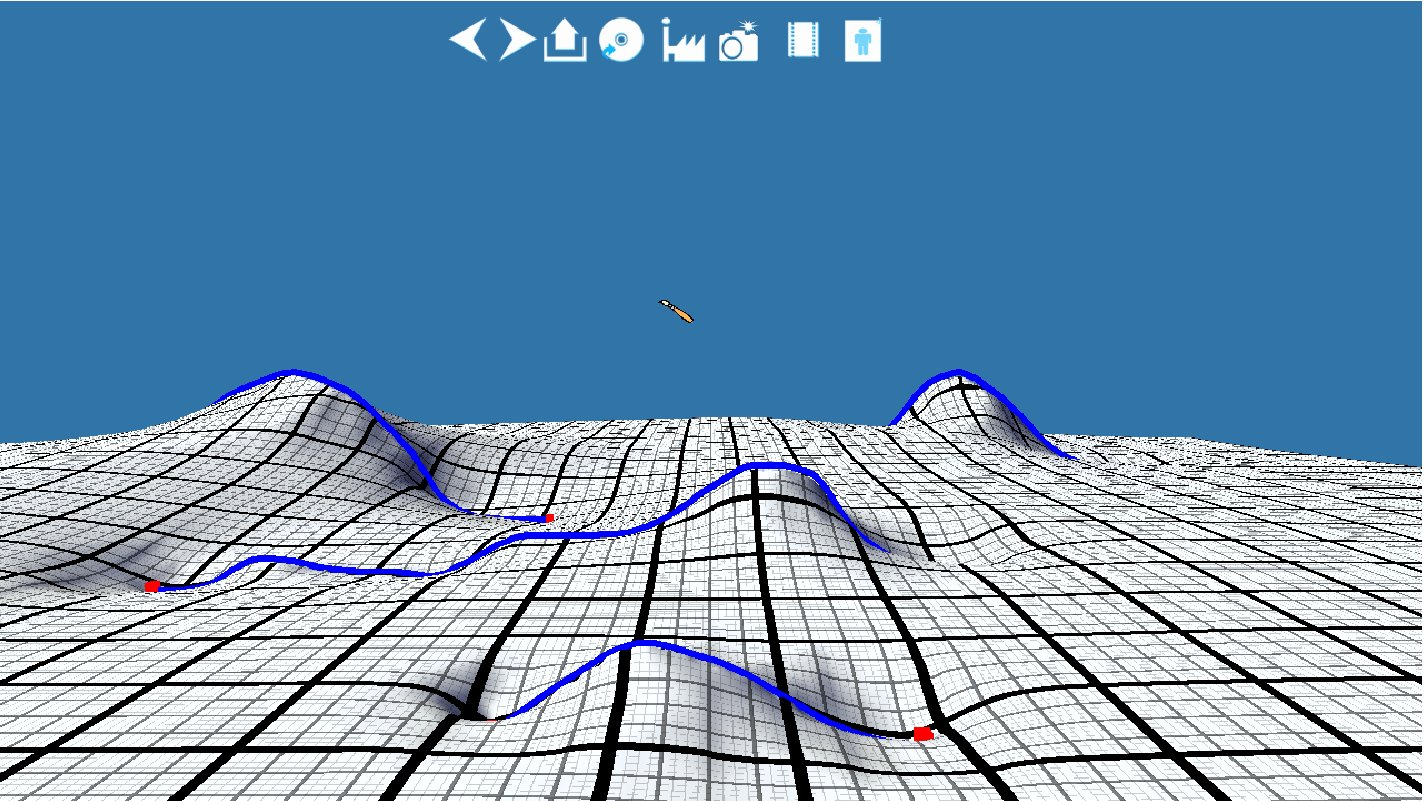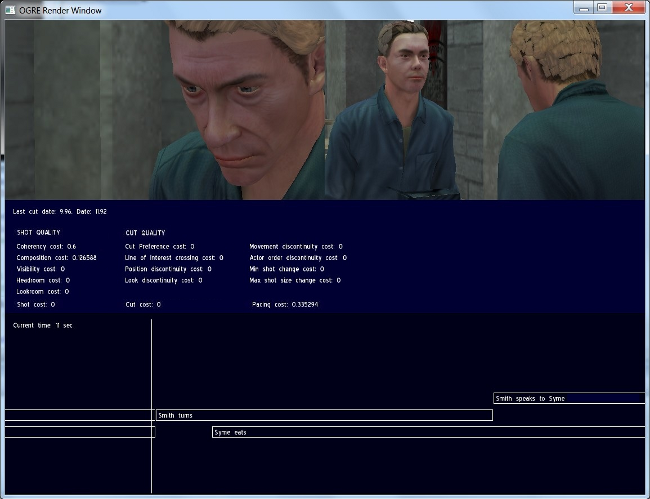Section: New Results
Towards interactive digital creation media
Sketch-based modeling and shape editing
Participants : Adrien Bernhardt, Rémi Brouet, Marie-Paule Cani, Jean-Claude Léon, Olivier Palombi.
3D modeling from a sketch is a fast and intuitive way of creating digital content.
We developed a method based on convolution surfaces for inferring free-form shapes in 3D from arbitrary progressive sketches, without any a priori knowledge on the objects being represented (see the section describing the Aestem Studio software. We recently investigated whether 2D deformation could be a better approach than sketching for defining the 2D sketch given as input [18] . Results are very promising; We are planning both to allow such intuitive deformations, combined with sketching, within the Astem software, and to extend them to the editing of the 3d deformed shape. This will be done in the context of Rémi Brouet’s PhD thesis, co-advised by Renaud Blanch from the IIHM/LIG team.
We also develop methods for interpreting complex sketches (contours with T-junctions) based on some a priori knowledge. Our first work on this topic used the conventions of anatomical drawing to infer the 3D geometry of vascular systems, with branching and occlusions, from a single sketch [10] . We are also investigating the design of realistic terrains from a single sketch, within the PhD thesis of Adrien Bernhardt (see fig. 8 ). Our first advances include a new representation and new methods for generating a high-field from user-sketched constraint curves [30] , [17] .
Free-form sculpture
Participants : Marie-Paule Cani, Lucian Stanculescu.
In the context of Lucian Stanculescu’s PhD thesis, co-advides by Raphaelle Chaine from LIRIS (Lyon), we developed an interactive sculpting system enabling both arbitrary deformation and topological changes of a free-form shape [11] . Our method is based on a semi-regular mesh which adaptively refines and changes its topology according to the need. See Figure 9 . We are currently extending the method for handing the sculpting of composite objects made of many different components.
|
Hand Navigator
Participants : Jean-Rémy Chardonnet, Jean-Claude Léon.
The different deformation models we developed in the past few years open the problem of providing intuitive interaction tools for specifying the desired deformations in real-time. Therefore, our recent work focused on developing new devices for interacting with the model to deform. For the past two years, we focused on developing a peripheral device similar to a mouse, called the HandNavigator, enabling to control simultaneously ten or more degrees of freedom of a virtual hand. This device consists in a 3D mouse for the position and orientation of the hand in 3D space, enhanced with many sensors for moving and monitoring the virtual fingers. Thanks to a pre-industrialization project funded by the incubator GRAVIT, the first prototype, patented by INRIA, has been extended with the incorporation of new sensors and new shapes to improve the device efficiency. An ongoing extension of the patent and a partnership with HAPTION company are new step toward the industrialization of this device. Dissemination to general public has been performed at the “Fête de la Science” and another exhibition. Publications will take place after setting up the patent extension. The ongoing BQR INTUACTIVE funded by Grenoble-INP will lead to further scientific topics regarding interactions during grasping as well as with deformable bodies and a partnership has been set up with GIPSA-Lab to study the muscular activity during interactions.
Procedural modeling
Participants : Marie-Paule Cani, Arnaud Emilien.
We developed a method for procedurally generating villages with the appropriate roads and streets on arbitrary terrains, in collaboration with Eric Galin from LIRIS, Lyon. This work will be continued within Arnaud Emilien’s PhD thesis towards more general models for populating terrains with houses, vegetation, and animals. We will focus on the development of intuitive ways to edit procedural models, to overcome the main drawback of these approaches.
Computational model of film editing
Participant : Remi Ronfard.
Building on Remi Ronfard's experience leading the virtual cinematography research team at Xtranormal Technology, Montreal, we designed a novel computational model for automatic editing of animated movies (see fig. 10 ). A prototype has been implemented in a collaboration with the Bunraku/mimetic team, and demonstrated in poster sessions at the Symposium on Computer Animation (SCA) [31] and International Conference on Interactive Digital Storytelling (ICIDS) [21] . This early work opens new directions that will be further explored by the IMAGINE team, including corpus-based learning of cinematography and editing styles.





